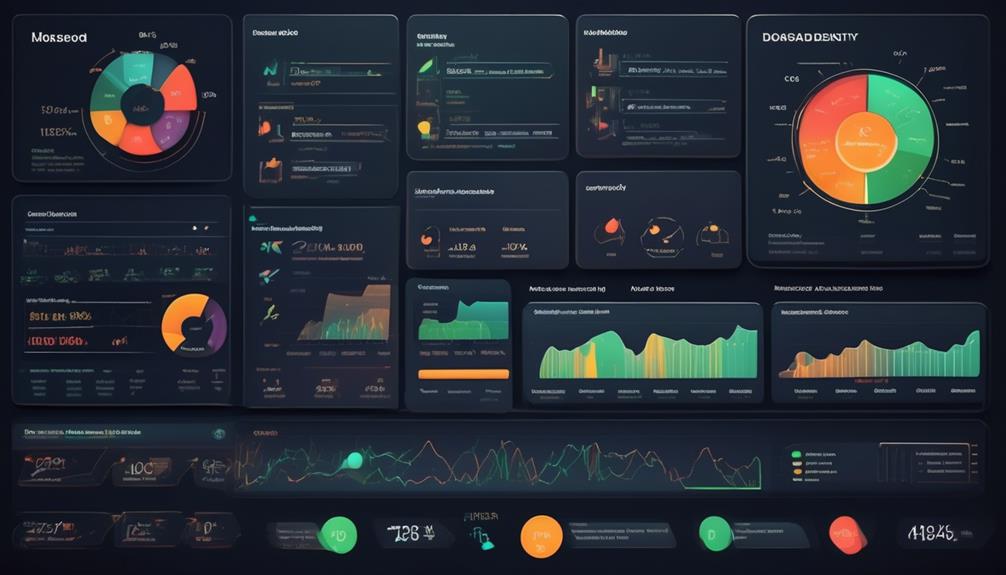When it comes to assessing metrics for software quality assurance, it is essential to understand the correct ways to measure these metrics in order to ensure the success of software projects. This includes establishing clear goals for software quality, as well as implementing and analyzing testing metrics, among other important steps.
According to a recent survey, 80% of software development organizations consider code quality as a crucial metric for assessing overall software quality. This highlights the importance of measuring software quality assurance metrics in order to evaluate the overall success of software projects.
Measuring software quality assurance metrics involves defining clear goals for software quality. These goals should be specific, measurable, attainable, relevant, and time-bound (SMART). By setting SMART goals, software development organizations can effectively measure and evaluate the success of their software projects.
Implementing and analyzing test metrics is another important aspect of measuring software quality assurance metrics. Test metrics provide valuable insights into the effectiveness of the testing process and the overall quality of the software. By analyzing these metrics, software development organizations can identify areas for improvement and take necessary actions to enhance the quality of their software.
In conclusion, measuring software quality assurance metrics is crucial for assessing the overall success of software projects. By defining software quality goals and implementing and analyzing test metrics, software development organizations can ensure the delivery of high-quality software that meets the needs and expectations of their stakeholders.
Key Takeaways
- Defining clear quality goals is essential for assessing software’s performance and effectiveness.
- Metrics play a crucial role in quantifying software’s performance, reliability, usability, and correctness.
- Code quality metrics, reliability metrics, performance metrics, and usability metrics are essential in measuring software quality.
- Implementing and analyzing test metrics and establishing a system for tracking metric data ensure high standards of quality and reliability in software.
Importance of Defining Software Quality Goals
Defining software quality goals is crucial for outlining the desired outcome of the software development process and ensuring that it aligns with overall quality objectives. By establishing clear quality goals, we can effectively measure software quality and ensure that the software product meets the necessary standards. It also enables us to identify and focus on important software quality metrics, such as code quality, testing, and security metrics, which are fundamental in the development of a high-quality software product.
One can’t overstate the importance of defining software quality goals. It not only provides a roadmap for the development process but also serves as a benchmark against which the software’s performance and effectiveness can be assessed. Additionally, it helps in determining the specific criteria by which the success of the software will be measured.
Measuring Success Criteria for Software

Having outlined the importance of defining software quality goals, we now turn our attention to measuring the success criteria for software, which encompasses various metrics to evaluate the software’s performance and effectiveness.
When it comes to software quality, metrics play a crucial role in quantifying the success criteria. Code quality metrics, for instance, provide insights into the software’s maintainability, readability, and the rate of bugs, ensuring a high standard of quality software.
Additionally, reliability can be measured using Mean Time Between Failure (MTBF) and Mean Time To Repair (MTTR), which are vital in assessing the software’s dependability.
Performance metrics are essential for analyzing resource utilization and user satisfaction, ultimately ensuring that the software meets the required performance standards.
Moreover, usability metrics focus on user-friendliness and end-user satisfaction, while correctness metrics ensure that the system works without errors and measures the degree of service provided by each function.
Identifying Essential Software Quality Metrics
To effectively assess software quality, it’s imperative to identify and utilize essential quality metrics that encompass various aspects of performance and user satisfaction.
Code quality metrics are crucial, measuring quantitative and qualitative aspects such as lines of code, complexity, readability, and bug generation rate.
Reliability metrics, including Mean Time Between Failure (MTBF) and Mean Time To Repair (MTTR), assess stability and consistency.
Performance metrics gauge if software meets user requirements and evaluate resource utilization.
Usability metrics focus on end-user satisfaction and user-friendliness, while correctness metrics ensure error-free functionality and measure the degree of service provided by each function.
These metrics collectively provide a comprehensive understanding of software quality, enabling organizations to make informed decisions regarding custom software development, security measures, and overall improvement.
Implementing and Analyzing Test Metrics

As we move into the realm of implementing and analyzing test metrics, our focus on identifying essential software quality metrics serves as a solid foundation for evaluating the effectiveness and reliability of the testing processes.
When implementing and analyzing test metrics, it’s crucial to consider the following:
- SeaLights test metrics
- Visualize test coverage and effectiveness using SeaLights, ensuring that all critical areas of the software are thoroughly tested.
- Track the impact of code changes on test coverage and identify areas that require additional testing.
- CISQ software quality model
- Utilize the CISQ software quality model to measure the quality of the software products through both automated and manual tests.
- Employ the CISQ model to assess the measure of software quality throughout the Testing Life Cycle, ensuring that regression testing is adequately addressed.
In the realm of software quality, understanding the significance of code quality metrics, reliability metrics, user satisfaction measures, and correctness assessments is essential. By implementing and analyzing test metrics, we can ensure that our software meets the highest standards of quality and reliability.
Establishing a System for Tracking Metric Data
Establishing a robust data tracking system is essential for monitoring software quality metrics over time, ensuring that all aspects of code quality, reliability, performance, usability, and correctness are effectively measured.
To achieve this, it’s crucial to implement a data collection system that gathers both quantitative and qualitative data on various metrics. Quantitative metrics involve tracking Mean Time Between Failure (MTBF) and Mean Time To Repair (MTTR) to measure reliability consistently. Performance measurement tools should be used to analyze software performance and resource utilization, ensuring they meet user requirements.
Additionally, a system for tracking end-user satisfaction and user-friendly aspects should be created to measure usability metrics effectively.
Moreover, the data tracking system should focus on gathering information related to the source code, such as test coverage, the frequency of high priority bugs, and the presence of semantically correct code. This will enable the assessment of code quality and reliability over time.
Furthermore, incorporating automated testing into the data tracking system will provide valuable insights into the correctness of the software.
Frequently Asked Questions
How Do You Measure Software Quality Assurance?
We measure software quality assurance by utilizing a combination of quantitative and qualitative metrics.
These include:
- Code quality
- Reliability
- Performance
- Usability
- Correctness
For code quality, we assess factors such as lines of code, complexity, and bug generation rate.
Reliability is measured through Mean Time Between Failure (MTBF) and Mean Time To Repair (MTTR).
Performance is evaluated based on user requirements and resource utilization.
Usability and correctness are gauged through end-user satisfaction and error-free functionality.
How Do You Measure QA Metrics?
Measuring QA metrics involves quantifying code quality, reliability, performance, usability, and correctness. It requires a comprehensive approach that blends quantitative and qualitative assessments.
This involves analyzing factors such as:
- Lines of code
- Bug rates
- MTBF (Mean Time Between Failures)
- MTTR (Mean Time To Repair)
- User requirement fulfillment
- Resource utilization
- User friendliness
- End-user satisfaction
- Degree of service provided by each software function
These metrics offer valuable insights into the overall quality and effectiveness of the software.
How Do You Measure Quality Metrics?
We measure quality metrics by employing quantitative and qualitative measures such as lines of code, bug rates, readability, and maintainability to evaluate code quality.
Reliability is assessed through Mean Time Between Failure (MTBF) and Mean Time To Repair (MTTR).
Performance metrics analyze resource utilization and delivery time.
Usability metrics focus on user satisfaction, while correctness metrics assess error-free functionality.
These measures are essential for setting clear goals and determining relevant quality metrics for evaluation.
What Are Different Types of Metrics to Measure Software Quality?
Different types of metrics to measure software quality include:
- Code quality: This encompasses factors like lines of code, complexity, and bug rate.
- Reliability: These metrics gauge stability and failure response.
- Performance: These metrics analyze time and resource utilization.
- Usability: These metrics assess user-friendliness and satisfaction.
- Correctness: These metrics evaluate error-free operation.
These metrics provide a comprehensive view of software quality, enabling a thorough assessment and improvement.
Conclusion
In conclusion, measuring software quality assurance metrics is crucial for ensuring the success of a software project.
While some may argue that implementing and analyzing test metrics can be time-consuming, the benefits of identifying and addressing potential issues early on far outweigh the initial investment.
By tracking and analyzing essential quality metrics, we can continuously improve the software’s code quality, reliability, performance, usability, and correctness, leading to a more successful end product.









